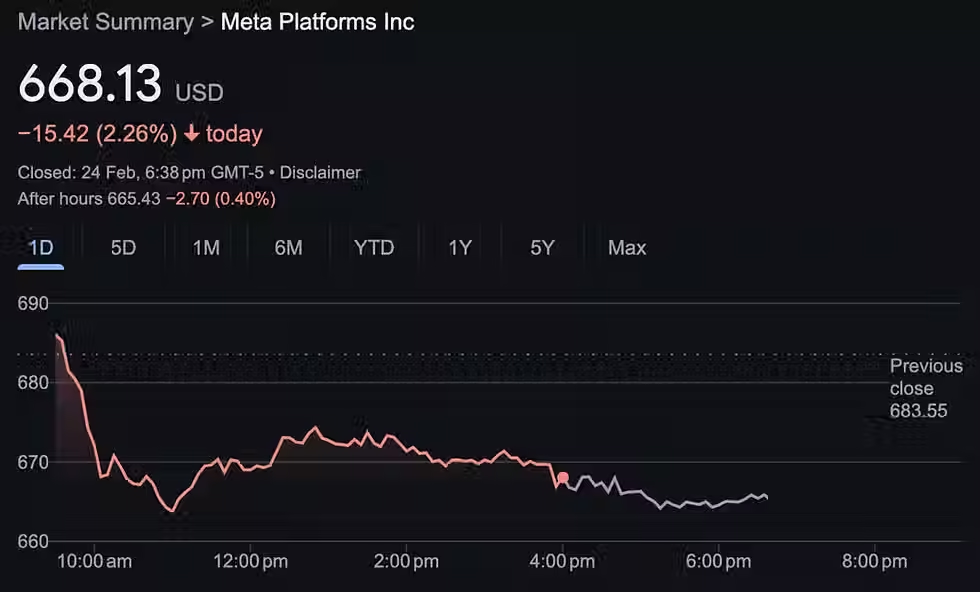How to Invest in Stocks: A Quick Guide for Beginners
- Buffett Online School

- Sep 8, 2023
- 6 min read

Investing means buying an asset, letting it work for us, and increasing its value over time. As Warren Buffett says, "Investing is forgoing consumption now to have the ability to consume more later."
In this article, we’ll share how to invest in stocks step-by-step. Regularly putting some of your money into investments gives you the potential to make it grow significantly over time. It's essential to start investing as early as possible and as soon as you save some money.
You can begin investing whether you have $1,000 saved or just $25 extra each week. Remember, there's a lot to learn about investing in stocks to be successful financially.
At Buffett Online School, we believe in investing in great companies that you understand, and utilizing Free Investing Resources to kickstart your investment journey is one of the best ways to learn.
Stock Investments: What is the Stock Market?

The stock market is where we buy and sell stocks of different companies. Companies sell stocks to fund their businesses. People who think the company will do well may decide to invest in stocks.
Shareholders receive dividends and profits if the stock's price goes up. However, if the company faces financial problems, the investment can shrink or become worthless.
The stock market is where owners can sell their shares to interested buyers. It happens on a stock exchange like the New York Stock Exchange or the Nasdaq.
When beginning stock investing, you might hear news about the market being "up," they usually mean the performance of specific stock collections, like the S&P 500 or the Dow Jones Industrial Average. The S&P 500 has around 500 companies in the U.S., while the Dow has 30 large companies.
However, it's important to note that when people talk about "the market," they refer to these indexes, but the total market includes thousands of publicly traded companies.
Learn Investing in Stocks: Steps-by-Step Guide On Stock Investing

The easiest way to invest in stocks is by purchasing individual stocks or stock funds through an online investment account, also known as a brokerage account.
If you're ready to invest in stocks, this five-step process may help you start.
1. Decide What Investing Approach To Use
We must determine first which investing approach will align with your goals and risk tolerance.
Investing in individual stocks is suitable only if you have the time and interest to research and evaluate where to invest in stocks regularly and thoroughly. If you enjoy doing this, we fully support you!
An intelligent and patient investor can outperform the overall market in the long run. But if you find things like reading quarterly earnings reports and doing math calculations unappealing, there's nothing wrong with a more hands-off approach.
Another option is index funds investment, which tracks a specific group of stocks like the S&P 500. People generally prefer these passively managed funds because they have lower costs and usually match the long-term performance of their respective stock indexes.
A robo-advisor is a popular choice nowadays. It's like an online brokerage investing your money in an index funds portfolio based on age, risk tolerance, and investment goals.
2. Determine The Amount To Invest
Before you invest in stocks, you should know which money you shouldn't put into them. The stock market is not a safe place for money you might need within the next five years.
Even though the stock market generally goes up in the long term, it can be very unpredictable in a short time. Sometimes, the value of stocks can drop by 20% in a single year, and occasionally they can even fall by 40% or more.
For example, during the COVID-19 pandemic 2020, the market plummeted by over 40% but quickly recovered to reach new all-time highs in a few months.
Here are some examples of money that you should keep away from the stock market:
Your emergency fund
The money you need to pay for your child's tuition soon
Funds set aside for next year's vacation
The money you save for a down payment on a home, especially if you won't buy one for several years.
Now, let's discuss your asset allocation or the money you can invest and won't need for the next five years. Your age is one of the main factors, along with how comfortable you are with taking risks and what you want to achieve with your investments, especially when investing in stock for the first time.
The general idea is that as you age, it's better to have less of your money in stocks. When you're young, you have many years ahead to handle the ups and downs of the market.
However, it might be better to be careful with your investments if you're retired and depend on them for your income.
Here's a simple rule to help you decide how much to put in stocks. Take your age and subtract it from 110. The result is the approximate percentage of your money in stocks. So if you’re 40 years old, you can place 70% of your portfolio on stocks.
The rest can be placed in safer investments like bonds or high-yield CDs.
3. Open an Investment Account
Once you have a preference, you can open an investment account. Here are the best ways to invest in stocks you can choose from to open your investment account:

Retirement Account
Exploring available retirement account options is essential for individuals in different countries to secure their financial futures.
In the United States, options like Individual Retirement Accounts (IRAs) and 401(k)s offer tax-advantaged savings opportunities for those looking to build long-term wealth. IRAs provide flexibility in investment choices, while 401(k)s are employer-sponsored plans with the added advantage of potential employer contributions.
Meanwhile, in Singapore, CPF Investment Schemes (CPFIS) enable Central Provident Fund (CPF) members to invest their CPF savings in a range of financial instruments, potentially yielding higher returns. By understanding and leveraging these respective retirement accounts, individuals can tailor their savings strategies to align with their financial goals and the specific regulations governing each country's retirement landscape.
Online Brokers
Consider opening an online brokerage account if you want to invest in stocks, funds, and other assets. With this choice, you will have quick, easy access to a wide variety of investments. Managing your online portfolio is simple and adaptable with an online brokerage account.
Online brokerage accounts like Moomoo, governed by the Monetary Authority of Singapore, are among the most well-liked alternatives. Depending on your investment goals and preferences, you can choose the type of account that suits you best.
Robo-advisor
This account takes your investment goals and creates a stock portfolio for you. The top-notch robo-advisors are easy to set up, help you plan your financial goals well, manage your accounts, and invest for you. They also have safety measures, provide helpful information, and charge low fees.
4. Choose your Stocks
Picking stocks can be overwhelming, especially if you're new to investing. Many stocks are on major U.S. exchanges, so it can take time to know where to start.
Successful investors often stick to the basics. They use funds for most of their investments, like the S&P 500 ETF, a low-cost way to invest in around 500 big U.S. companies. They will pick individual stocks only if they think the company will do well and grow over time.
The S&P 500 has been around for 50 years and has historically given an average return of about 10% per year, similar to the overall market's performance.
Always keep in mind that every investment has its risk. That's why you must also understand what and where you put your money. Take advantage of different investing tools that may help you understand and analyze companies better.
You can join investing communities to gain more investment knowledge, especially if you're a beginner.
5. Manage your stock portfolio
Daily worrying about the market's ups and downs will not help your investments or peace of mind. However, there might be moments when keeping an eye on your stocks or other investments is necessary.
You will want to revisit your portfolio yearly to ensure it aligns with your investment goals.
If you're approaching retirement, you may also move some of your stock investments to more conservative fixed-income investments.
If you have many investments in one business or industry, consider getting stocks or funds from other areas to diversify your investments and reduce risk.
Should You Invest in Stocks?
Investing in stocks may feel overwhelming, especially when new to it. You can set your goals first and decide how much money you can invest.
Invest in stocks as long as you're okay with leaving it there for at least five years because the stock market usually recovers from any bad times within that period.
Learn more about different investing ways and pick the ones that match your goals and how much risk you're comfortable with.
The important thing on how to invest in stocks is to start and keep going regularly. The best strategy is the one you can stick with over time. Remember, all investments have some risk, so research and choose what investments suit you best as an investor.
Join Our Free 2-Day BOS Value Investing MBA
At the Buffett Online School, we believe in learning the right investing mindset and system, so we can start cultivating emotional detachment and grow our wealth safely and substantially in the long run.
Our next 2-day BOS MBA Value Investing Online Bootcamp is happening soon! We will teach you how to use Warren Buffett's proven investing method to maximize your portfolio.
Remember, you have the choice to cultivate the right investing mindset and unlock your potential to build wealth through intelligent investing. Together, we can create a network of educated investors who make informed decisions and contribute to their financial well-being!
In the meantime, feel free to check out some of our blog posts to continue learning. You can also join our BOS Telegram channel for more investing insights!





Comments